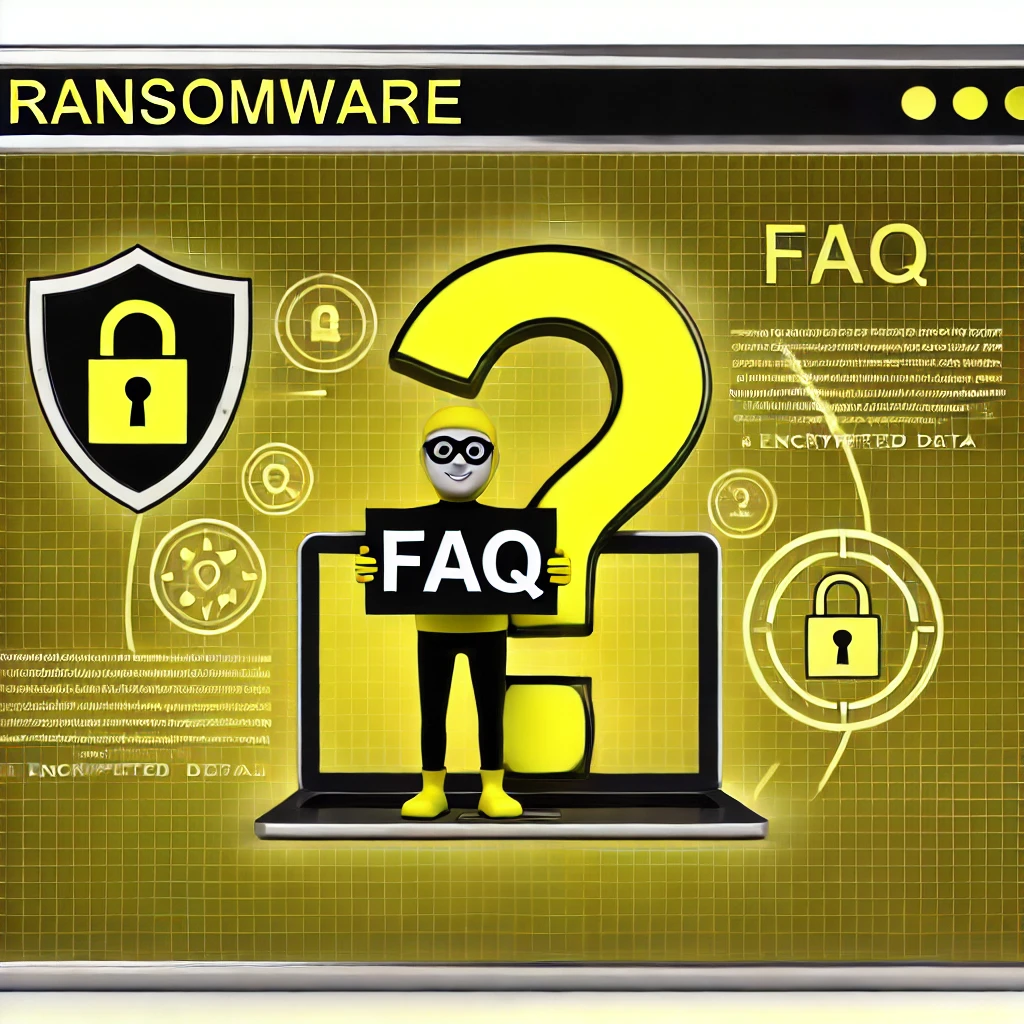
Timeline of the Development and Emergence of Ransomware
1989 – The First Ransomware Attack
- AIDS Trojan (PC Cyborg Virus): The first known ransomware, created by Joseph Popp, was distributed via floppy disks. It encrypted files on a victim’s computer and demanded a $189 ransom paid to a PO Box in Panama for decryption.
1996 – Concept of Cryptovirology
- Moti Yung and Adam Young: Researchers introduced the concept of cryptovirology, discussing how cryptography could be used maliciously to extort money from users, laying the theoretical foundation for future ransomware.
2005 – Emergence of Modern Ransomware
- Archievus: One of the first modern ransomware attacks that encrypted files using RSA encryption. It required the user to purchase a password from a specific website to unlock their files.
2006 – The Rise of Fake Antivirus Software
- FakeAV Ransomware: Cybercriminals began using fake antivirus programs that claimed to find malware on the victim’s computer, demanding payment to remove non-existent threats. While not true ransomware, this paved the way for more sophisticated attacks.
2011 – The Rise of Ransomware-as-a-Service (RaaS)
- RaaS Platforms: Cybercriminals started offering ransomware kits on the dark web, allowing even non-technical criminals to launch ransomware attacks. This significantly increased the frequency and diversity of attacks.
2013 – Cryptolocker
- Cryptolocker: This ransomware was a game-changer, using strong RSA-2048 encryption and demanding payment in Bitcoin. It marked the beginning of the widespread use of cryptocurrencies in ransomware attacks.
2015 – Development of File-Locking Ransomware
- TeslaCrypt: Initially targeted gamers by encrypting game-related files, but it quickly evolved to encrypt a broader range of file types. TeslaCrypt was notable for its aggressive distribution methods and multiple versions.
2016 – The Year of Ransomware
- Locky, Cerber, Petya: Ransomware became the most prevalent form of cyberattack, with significant strains like Locky and Cerber spreading rapidly. Petya introduced a new method of locking users out by encrypting the Master Boot Record.
2017 – The WannaCry and NotPetya Outbreaks
- WannaCry: Spread across the globe in May 2017, exploiting a vulnerability in Windows systems. It infected over 230,000 computers in 150 countries within a day, demanding ransom in Bitcoin.
- NotPetya: Initially appeared as ransomware but was later identified as a wiper, causing widespread destruction under the guise of a ransomware attack. It targeted Ukraine but affected systems worldwide, causing billions in damage.
2018 – The Rise of Targeted Ransomware Attacks
- SamSam and Ryuk: Cybercriminals shifted from mass attacks to targeted ransomware attacks on high-profile organizations, including hospitals, government institutions, and large corporations, demanding higher ransoms.
2019 – Evolution of Ransomware Tactics
- Maze: Maze ransomware introduced the tactic of data exfiltration, where attackers would steal data before encrypting it, threatening to release the stolen information publicly if the ransom was not paid.
2020 – Ransomware Surge During the COVID-19 Pandemic
- COVID-19 Exploitation: The pandemic saw a surge in ransomware attacks, with many targeting healthcare institutions. Ransomware groups exploited the chaos of the pandemic, knowing that organizations could not afford downtime.
2021 – The Colonial Pipeline Attack
- DarkSide Ransomware: The Colonial Pipeline, a major US fuel pipeline, was attacked by the DarkSide ransomware group, leading to fuel shortages and highlighting the critical impact ransomware can have on infrastructure.
2022 – Ransomware Continues to Evolve
- Double Extortion and RaaS: Ransomware groups increasingly adopted double extortion tactics (data theft and encryption) and the Ransomware-as-a-Service model, where operators provide ransomware tools to affiliates for a share of the profits.
2023 – Emergence of Triple Extortion:
- Triple Extortion Tactics: Some ransomware groups began adopting triple extortion, where in addition to encryption and data theft, they also launched DDoS attacks or targeted customers and partners of the initial victim to pressure payment.
Ransomware continues to evolve, with attackers constantly developing new methods to evade detection, increase their profits, and exploit vulnerabilities in systems worldwide. The fight against ransomware remains a significant challenge for cybersecurity professionals.
Ransomware is a type of malicious software that encrypts a victim’s data and demands payment to restore access.
Ransomware typically spreads through phishing emails, malicious attachments, compromised websites, or infected software downloads.
Disconnect from the network, avoid paying the ransom, seek professional assistance, and restore your data from backups if available.
No, paying the ransom does not guarantee that you will get your data back, and it encourages further criminal activity.
Use up-to-date security software, regularly back up your data, avoid suspicious links, and keep your operating system and applications updated.
Sudden file encryption, files with strange extensions, ransom notes, and restricted access to certain system functions can all be signs of a ransomware attack.
In some cases, you can recover data through backups, or by using decryption tools provided by cybersecurity experts, but this is not always possible.
Any business can be a target, but those with sensitive data, such as healthcare, finance, and education sectors, are often more at risk.
Ransomware is commonly delivered via email attachments, malicious ads, exploit kits on compromised websites, or through remote desktop protocol (RDP) vulnerabilities.
Report the incident to law enforcement agencies, such as the Eropol or local authorities, and inform relevant regulatory bodies, especially if sensitive data is involved.
